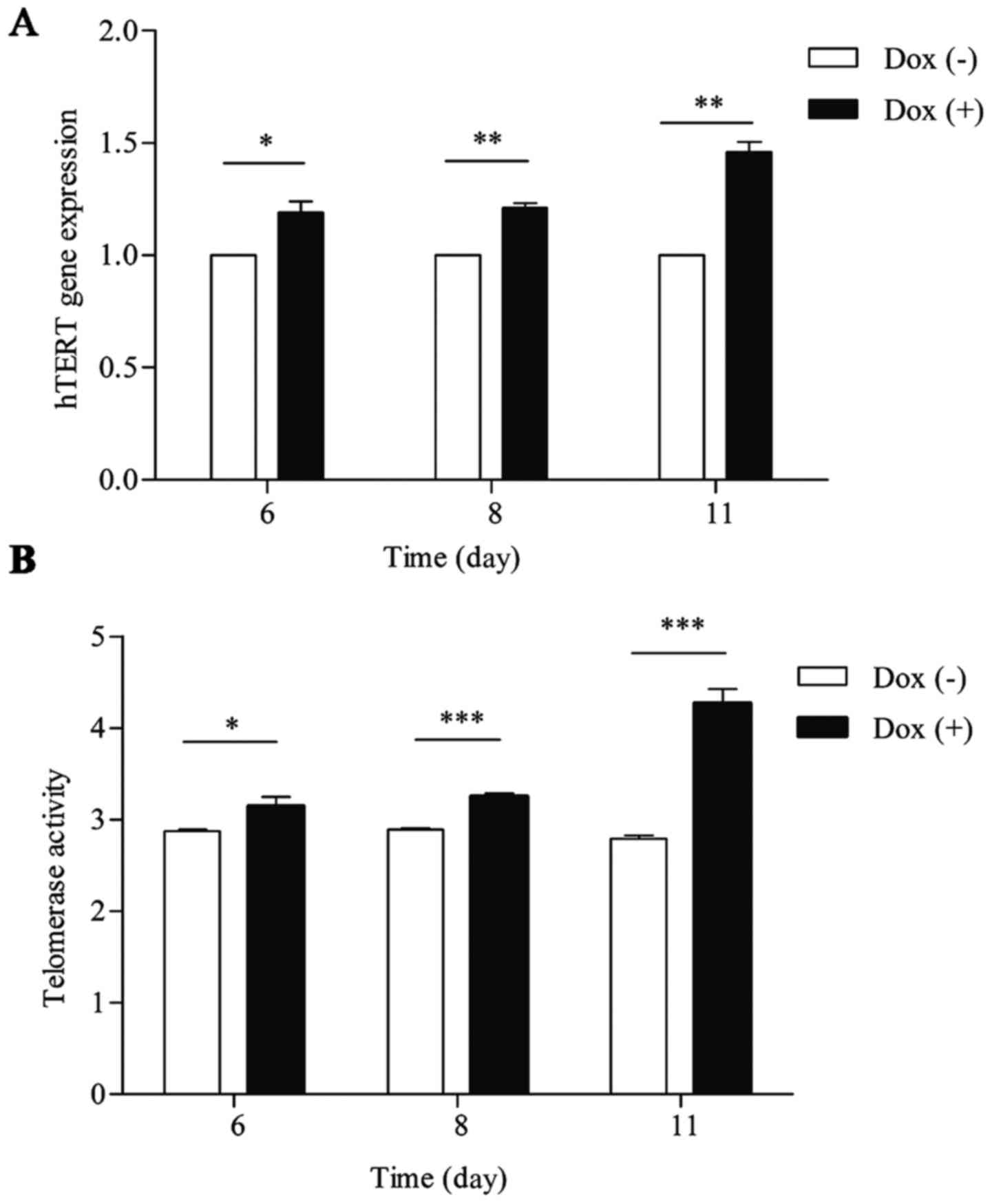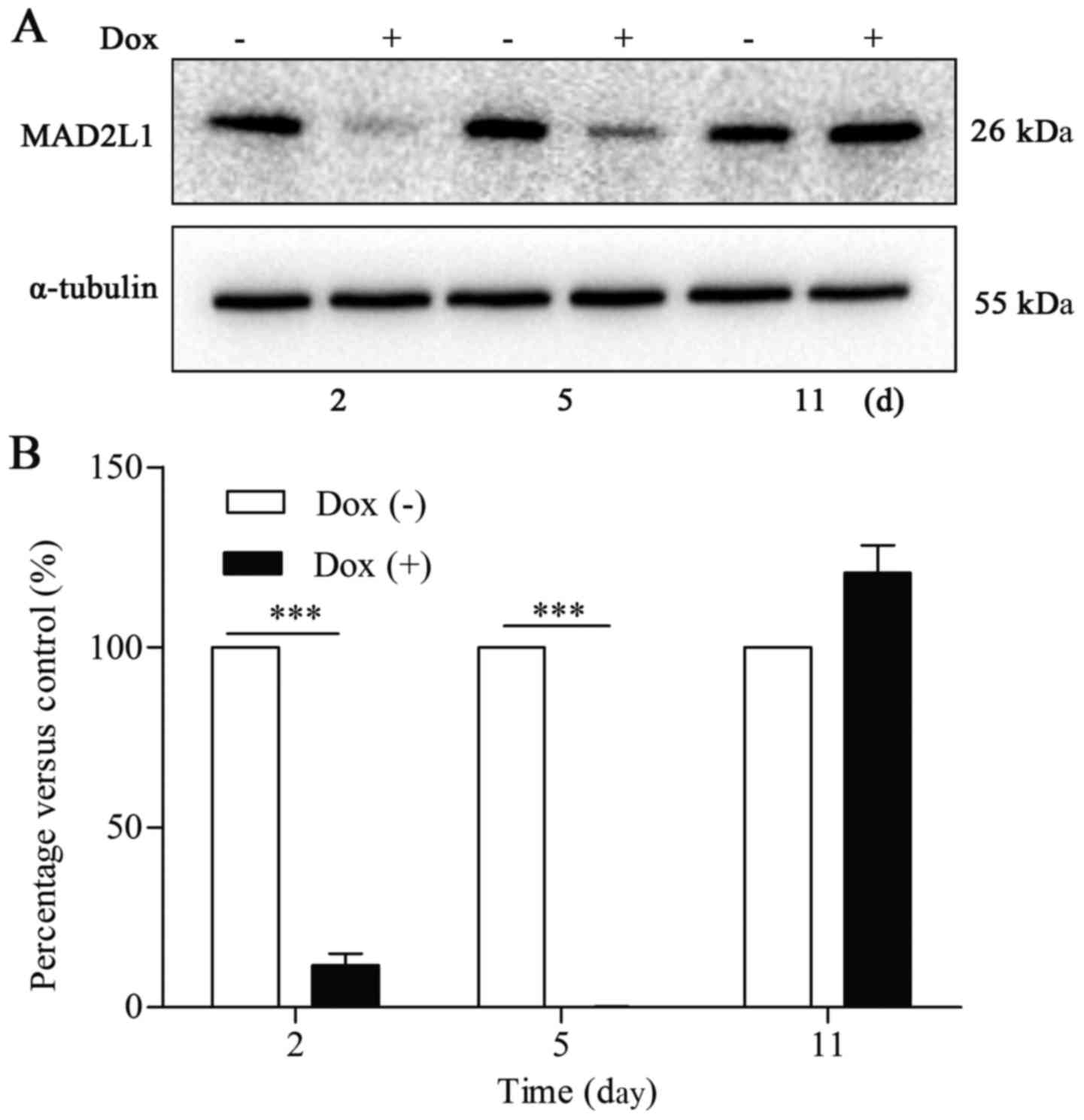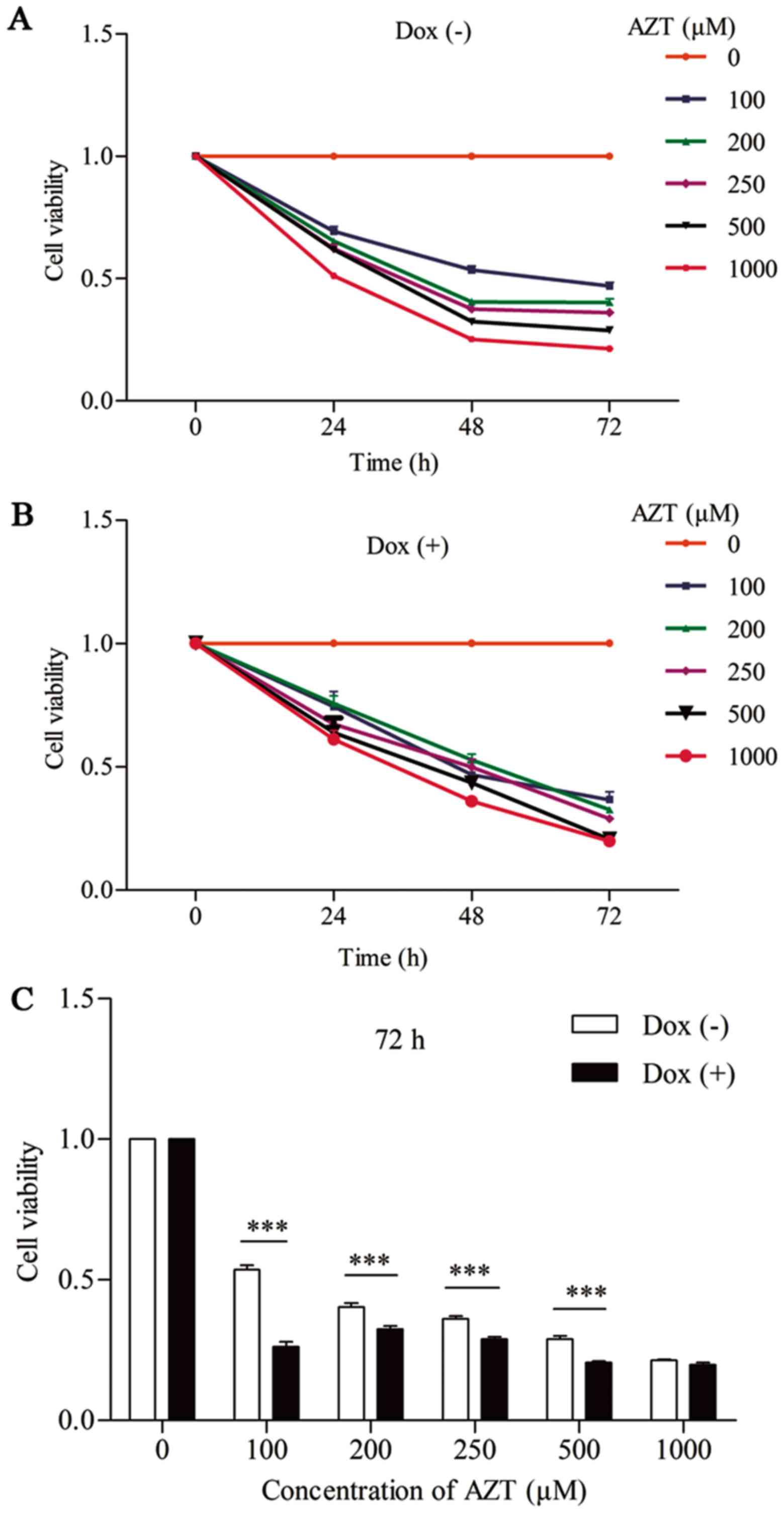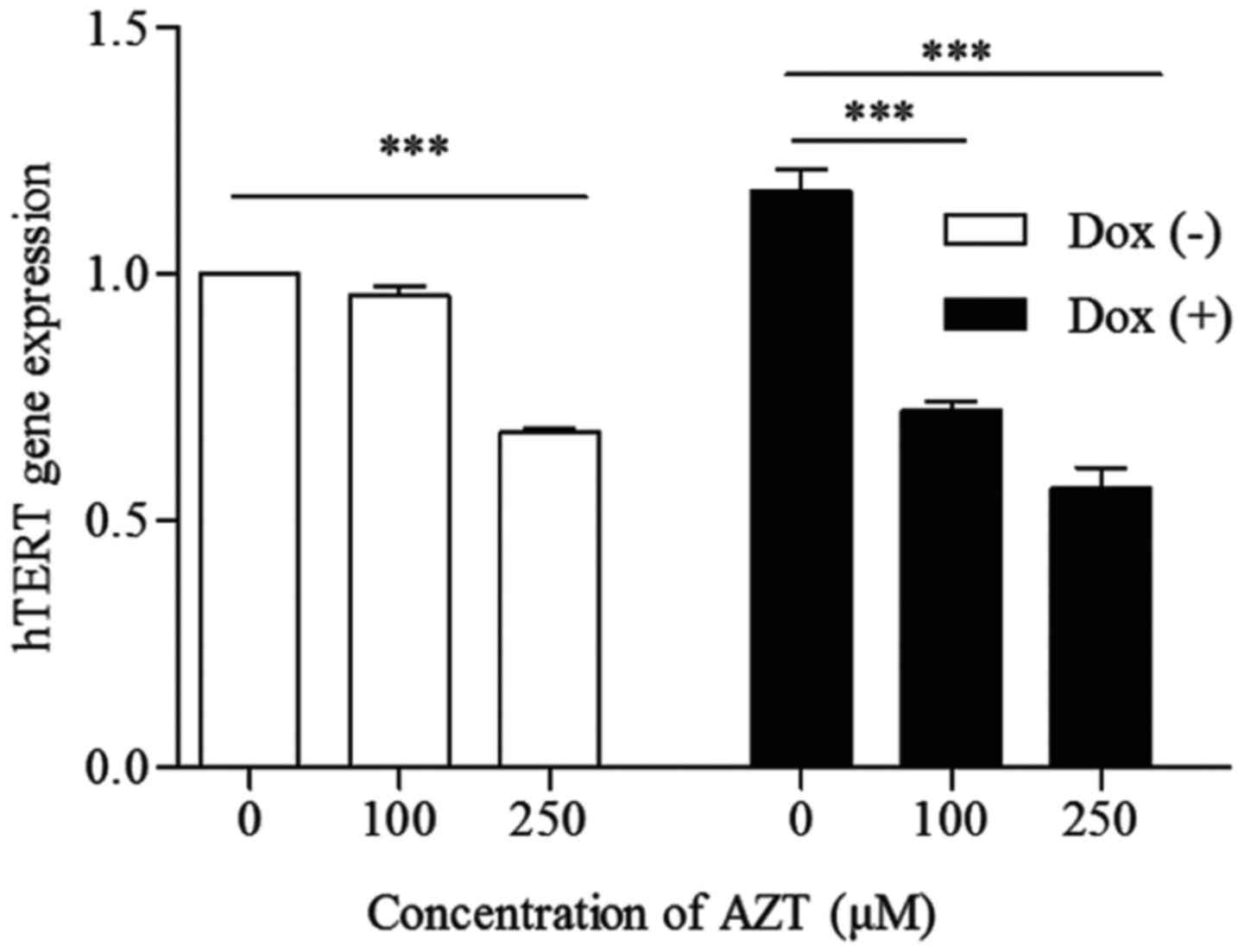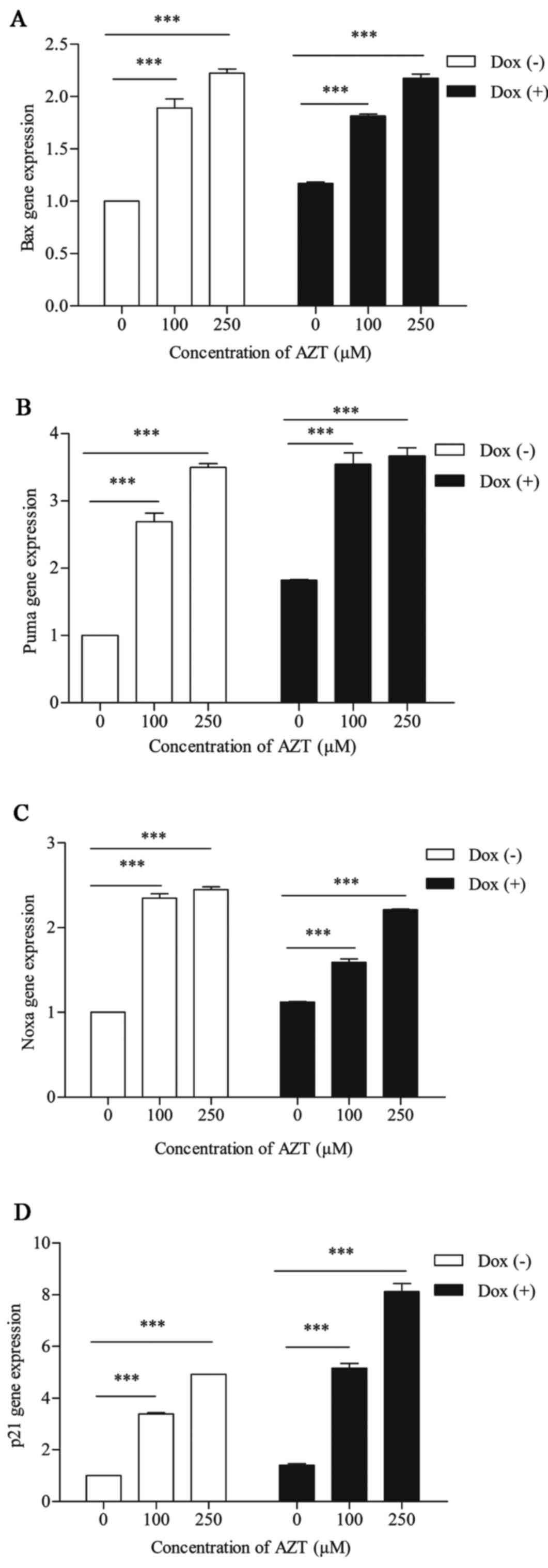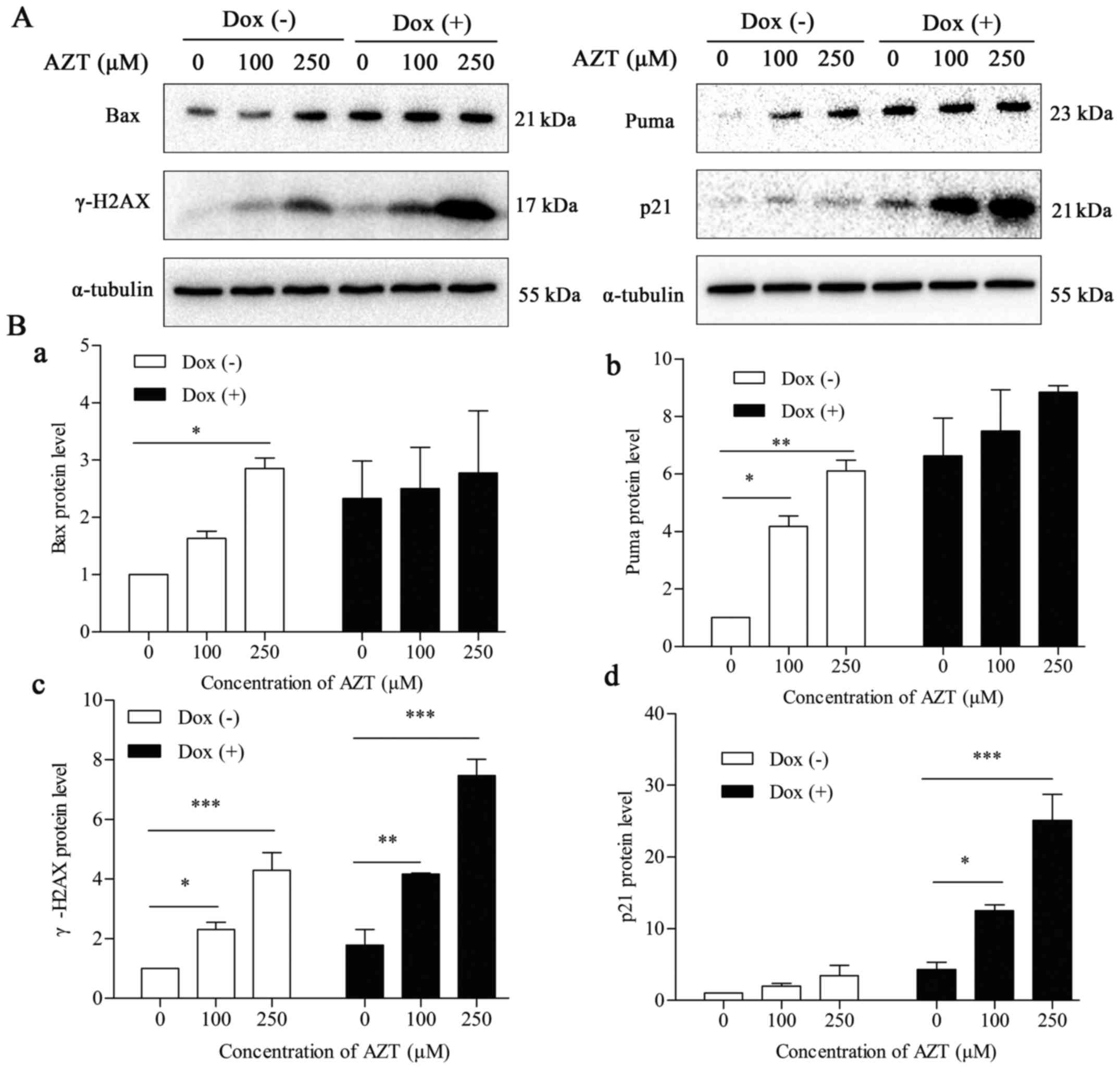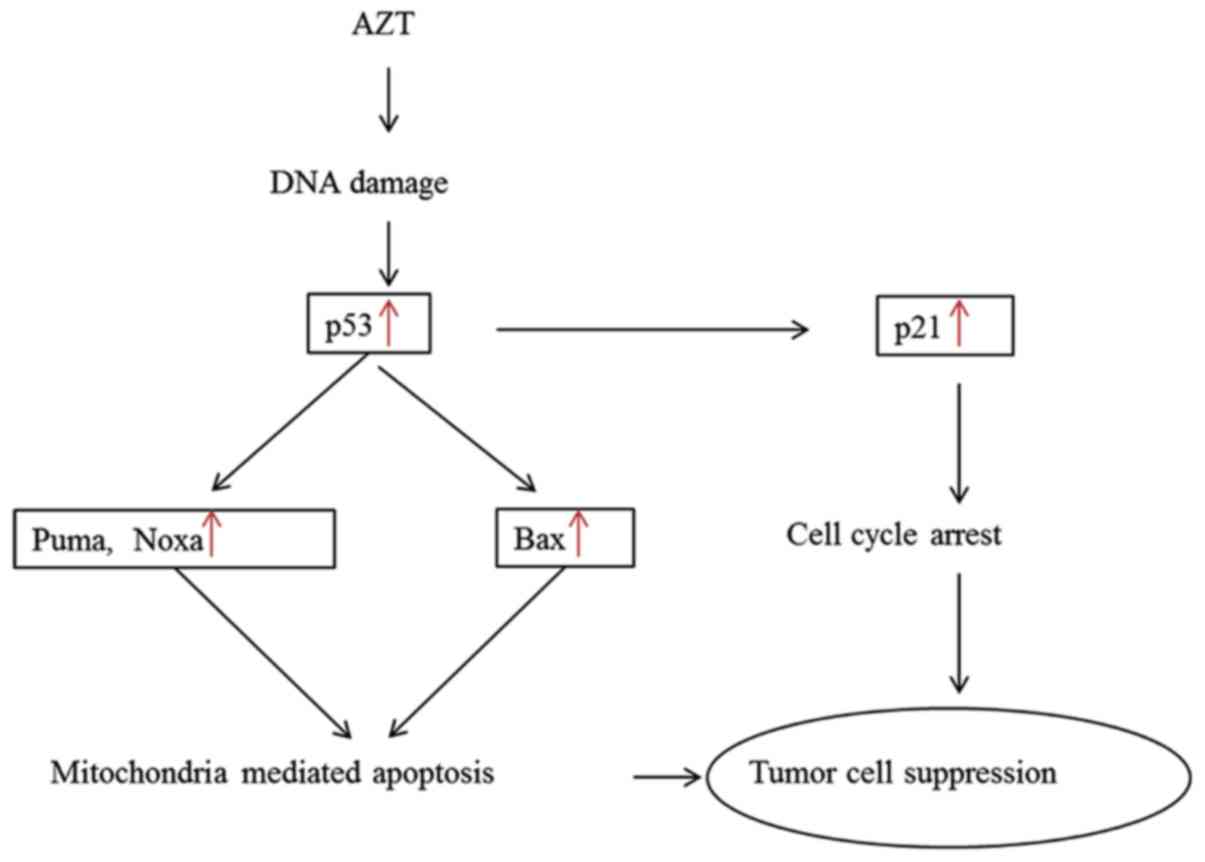|
1
|
Blackburn EH: Switching and signaling at
the telomere. Cell. 106:661–673. 2001. View Article : Google Scholar : PubMed/NCBI
|
|
2
|
Chiodi I and Mondello C: Telomere and
telomerase stability in human diseases and cancer. Front Biosci
(Landmark Ed). 21:203–224. 2016. View
Article : Google Scholar
|
|
3
|
Shay JW and Wright WE: Senescence and
immortalization: Role of telomeres and telomerase. Carcinogenesis.
26:867–874. 2005. View Article : Google Scholar
|
|
4
|
Verdun RE and Karlseder J: Replication and
protection of telomeres. Nature. 447:924–931. 2007. View Article : Google Scholar : PubMed/NCBI
|
|
5
|
Zhang N, Li J, Zhong X, An X and Hou J:
Reversible immortalization of sheep fetal fibroblast cells by
tetracycline-inducible expression of human telomerase reverse
transcriptase. Biotechnol Lett. 38:1261–1268. 2016. View Article : Google Scholar : PubMed/NCBI
|
|
6
|
Wieser M, Stadler G, Jennings P, Streubel
B, Pfaller W, Ambros P, Riedl C, Katinger H, Grillari J and
Grillari-Voglauer R: hTERT alone immortalizes epithelial cells of
renal proximal tubules without changing their functional
characteristics. Am J Physiol Renal Physiol. 295:F1365–F1375. 2008.
View Article : Google Scholar : PubMed/NCBI
|
|
7
|
Kapanadze B, Morris E, Smith E and
Trojanowska M: Establishment and characterization of scleroderma
fibroblast clonal cell lines by introduction of the hTERT gene. J
Cell Mol Med. 14:1156–1165. 2010.
|
|
8
|
Gu T, Wang X, Wang X, Wang W, Liu Y, Zhang
B, Shi Y, Zhang Z, Sun Q, Xue T, et al: The value of detecting
telomerase activity on early diagnosis of lung cancer. Zhongguo Fei
Ai Za Zhi. 4:37–40. 2001.In Chinese. PubMed/NCBI
|
|
9
|
Cavallo D, Casadio V, Bravaccini S,
Iavicoli S, Pira E, Romano C, Fresegna AM, Maiello R, Ciervo A,
Buresti G, et al: Assessment of DNA damage and telomerase activity
in exfoliated urinary cells as sensitive and noninvasive biomarkers
for early diagnosis of bladder cancer in ex-workers of a rubber
tyres industry. Biomed Res Int. 2014:3709072014. View Article : Google Scholar : PubMed/NCBI
|
|
10
|
Glybochko PV, Zezerov EG, Glukhov AI,
Alyaev YG, Severin SE, Polyakovsky KA, Varshavsky VA, Severin ES
and Vinarov AZ: Telomerase as a tumor marker in diagnosis of
prostatic intraepithelial neoplasia and prostate cancer. Prostate.
74:1043–1051. 2014. View Article : Google Scholar : PubMed/NCBI
|
|
11
|
Harley CB: Telomerase and cancer
therapeutics. Nat Rev Cancer. 8:167–179. 2008. View Article : Google Scholar : PubMed/NCBI
|
|
12
|
Low KC and Tergaonkar V: Telomerase:
Central regulator of all of the hallmarks of cancer. Trends Biochem
Sci. 38:426–434. 2013. View Article : Google Scholar : PubMed/NCBI
|
|
13
|
Gordon DJ, Resio B and Pellman D: Causes
and consequences of aneuploidy in cancer. Nat Rev Genet.
13:189–203. 2012.PubMed/NCBI
|
|
14
|
Pfau SJ and Amon A: Chromosomal
instability and aneuploidy in cancer: From yeast to man. EMBO Rep.
13:515–527. 2012. View Article : Google Scholar : PubMed/NCBI
|
|
15
|
Holland AJ and Cleveland DW: Losing
balance: The origin and impact of aneuploidy in cancer. EMBO Rep.
13:501–514. 2012. View Article : Google Scholar : PubMed/NCBI
|
|
16
|
Musacchio A and Salmon ED: The
spindle-assembly checkpoint in space and time. Nat Rev Mol Cell
Biol. 8:379–393. 2007. View
Article : Google Scholar : PubMed/NCBI
|
|
17
|
Fang X and Zhang P: Aneuploidy and
tumorigenesis. Semin Cell Dev Biol. 22:595–601. 2011. View Article : Google Scholar : PubMed/NCBI
|
|
18
|
Sheltzer JM: A transcriptional and
metabolic signature of primary aneuploidy is present in
chromosomally unstable cancer cells and informs clinical prognosis.
Cancer Res. 73:6401–6412. 2013. View Article : Google Scholar : PubMed/NCBI
|
|
19
|
Dürrbaum M, Kuznetsova AY, Passerini V,
Stingele S, Stoehr G and Storchová Z: Unique features of the
transcriptional response to model aneuploidy in human cells. BMC
Genomics. 15:1392014. View Article : Google Scholar : PubMed/NCBI
|
|
20
|
Beroukhim R, Mermel CH, Porter D, Wei G,
Raychaudhuri S, Donovan J, Barretina J, Boehm JS, Dobson J,
Urashima M, et al: The landscape of somatic copy-number alteration
across human cancers. Nature. 463:899–905. 2010. View Article : Google Scholar : PubMed/NCBI
|
|
21
|
Munné S, Bahçe M, Sandalinas M, Escudero
T, Márquez C, Velilla E, Colls P, Oter M, Alikani M and Cohen J:
Differences in chromosome susceptibility to aneuploidy and survival
to first trimester. Reprod Biomed Online. 8:81–90. 2004. View Article : Google Scholar : PubMed/NCBI
|
|
22
|
Williams BR, Prabhu VR, Hunter KE, Glazier
CM, Whittaker CA, Housman DE and Amon A: Aneuploidy affects
proliferation and spontaneous immortalization in mammalian cells.
Science. 322:703–709. 2008. View Article : Google Scholar : PubMed/NCBI
|
|
23
|
Davoli T, Xu AW, Mengwasser KE, Sack LM,
Yoon JC, Park PJ and Elledge SJ: Cumulative haploinsufficiency and
triplosensitivity drive aneuploidy patterns and shape the cancer
genome. Cell. 155:948–962. 2013. View Article : Google Scholar : PubMed/NCBI
|
|
24
|
Baker DJ and van Deursen JM: Chromosome
missegregation causes colon cancer by APC loss of heterozygosity.
Cell Cycle. 9:1711–1716. 2010. View Article : Google Scholar : PubMed/NCBI
|
|
25
|
Schvartzman JM, Sotillo R and Benezra R:
Mitotic chromosomal instability and cancer: Mouse modelling of the
human disease. Nat Rev Cancer. 10:102–115. 2010. View Article : Google Scholar : PubMed/NCBI
|
|
26
|
Li M, Fang X, Baker DJ, Guo L, Gao X, Wei
Z, Han S, van Deursen JM and Zhang P: The ATM-p53 pathway
suppresses aneuploidy-induced tumorigenesis. Proc Natl Acad Sci
USA. 107:14188–14193. 2010. View Article : Google Scholar : PubMed/NCBI
|
|
27
|
Meena JK, Cerutti A, Beichler C, Morita Y,
Bruhn C, Kumar M, Kraus JM, Speicher MR, Wang ZQ, Kestler HA, et
al: Telomerase abrogates aneuploidy-induced telomere replication
stress, senescence and cell depletion. EMBO J. 34:1371–1384. 2015.
View Article : Google Scholar : PubMed/NCBI
|
|
28
|
Gomez DE, Armando RG and Alonso DF: AZT as
a telomerase inhibitor. Front Oncol. 2:1132012. View Article : Google Scholar : PubMed/NCBI
|
|
29
|
Zhihua Z, Miaomiao S, Jianping Y and
Kuisheng C: Research for the influence of telomerase inhibitors on
myeloma cell and therapy. Pak J Pharm Sci. 27(Suppl): 1641–1644.
2014.PubMed/NCBI
|
|
30
|
He M, Jiang YY, Zhu M, Wei X, Qin J, Zhang
ZY and Li L: Effects of 3′-azido-deoxythymidine on telomerase
activity and protein expression of hepatocarcinoma cell line
SMMC-7721. Ai Zheng. 25:543–548. 2006.In Chinese. PubMed/NCBI
|
|
31
|
Souza Sobrinho CP, Gragnani A, Santos ID,
Oliveira AF, Lipay MV and Ferreira LM: AZT on telomerase activity
and cell proliferation in HS 839. T melanoma cells Acta Cir Bras.
27:855–860. 2012. View Article : Google Scholar
|
|
32
|
Brown T, Sigurdson E, Rogatko A and
Broccoli D: Telomerase inhibition using azidothymidine in the HT-29
colon cancer cell line. Ann Surg Oncol. 10:910–915. 2003.
View Article : Google Scholar : PubMed/NCBI
|
|
33
|
Stedt H, Samaranayake H, Kurkipuro J,
Wirth G, Christiansen LS, Vuorio T, Määttä AM, Piškur J and
Ylä-Herttuala S: Tomato thymidine kinase-based suicide gene therapy
for malignant glioma - an alternative for Herpes Simplex virus-1
thymidine kinase. Cancer Gene Ther. 22:130–137. 2015. View Article : Google Scholar : PubMed/NCBI
|
|
34
|
Sabokrouh A, Goodarzi MT, Vaisi-Raygani A,
Khatami S and Taghizadeh-Jahed M: Effects of treatment with
platinum azidothymidine and azidothymidine on telomerase activity
and bcl-2 concentration in hepatocellular carcinoma-induced rats.
Avicenna J Med Biotechnol. 6:200–209. 2014.PubMed/NCBI
|
|
35
|
Kim NW and Wu F: Advances in
quantification and characterization of telomerase activity by the
telomeric repeat amplification protocol (TRAP). Nucleic Acids Res.
25:2595–2597. 1997. View Article : Google Scholar : PubMed/NCBI
|
|
36
|
Junttila MR and Evan GI: p53 - a Jack of
all trades but master of none. Nat Rev Cancer. 9:821–829. 2009.
View Article : Google Scholar : PubMed/NCBI
|
|
37
|
Yu Z, Wang H, Zhang L, Tang A, Zhai Q, Wen
J, Yao L and Li P: Both p53-PUMA/NOXA-Bax-mitochondrion and
p53-p21cip1 pathways are involved in the CDglyTK-mediated tumor
cell suppression. Biochem Biophys Res Commun. 386:607–611. 2009.
View Article : Google Scholar : PubMed/NCBI
|
|
38
|
Boveri T: Concerning the origin of
malignant tumours by Theodor Boveri. Translated and annotated by
Henry Harris. J Cell Sci. 121(Suppl 1): 1–84. 2008. View Article : Google Scholar : PubMed/NCBI
|
|
39
|
Paulsson K and Johansson B: Trisomy 8 as
the sole chromosomal aberration in acute myeloid leukemia and
myelodysplastic syndromes. Pathol Biol (Paris). 55:37–48. 2007.
View Article : Google Scholar
|
|
40
|
Baek KH, Zaslavsky A, Lynch RC, Britt C,
Okada Y, Siarey RJ, Lensch MW, Park IH, Yoon SS, Minami T, et al:
Down's syndrome suppression of tumour growth and the role of the
calcineurin inhibitor DSCR1. Nature. 459:1126–1130. 2009.
View Article : Google Scholar : PubMed/NCBI
|
|
41
|
Jones L, Wei G, Sevcikova S, Phan V, Jain
S, Shieh A, Wong JC, Li M, Dubansky J, Maunakea ML, et al: Gain of
MYC underlies recurrent trisomy of the MYC chromosome in acute
promyelocytic leukemia. J Exp Med. 207:2581–2594. 2010. View Article : Google Scholar : PubMed/NCBI
|
|
42
|
Santaguida S and Amon A: Short- and
long-term effects of chromosome mis-segregation and aneuploidy. Nat
Rev Mol Cell Biol. 16:473–485. 2015. View Article : Google Scholar : PubMed/NCBI
|
|
43
|
Xie C, Subhash VV, Datta A, Liem N, Tan
SH, Yeo MS, Tan WL, Koh V, Yan FL, Wong FY, et al: Melanoma
associated antigen (MAGE)-A3 promotes cell proliferation and
chemotherapeutic drug resistance in gastric cancer. Cell Oncol
(Dordr). 39:175–186. 2016. View Article : Google Scholar
|



